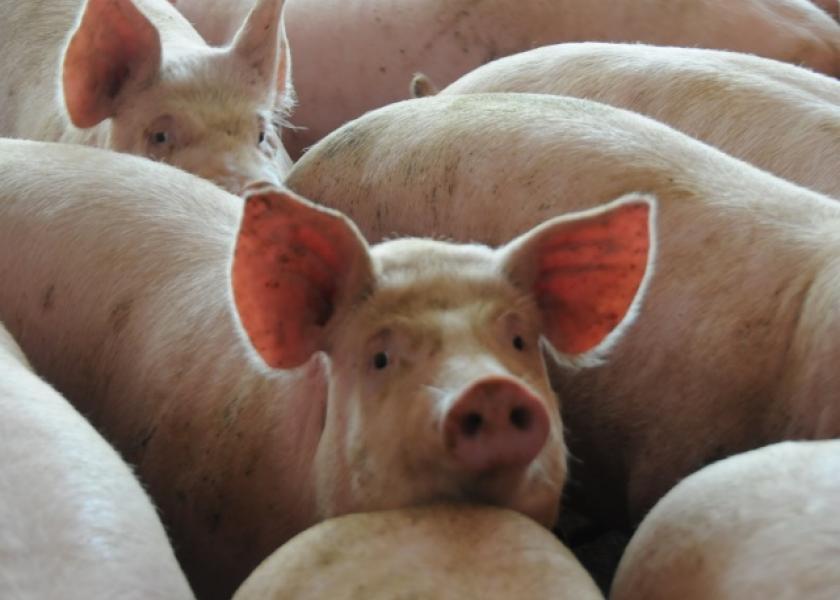China Pig Producers' Q1 Earnings Tumble on Lower Prices, Disease

China's top pig producers are set to report a plunge in first-quarter profits from the huge gains of last year, after hog prices fell, and disease, more expensive feed and poorly performing sows further eroded earnings.
The earnings declines began in the fourth quarter of 2020 and margins are still under pressure, said analysts, as companies face ongoing challenges and costs in recovering from African swine fever, which ravaged the country's hog herd in 2018 and 2019 and saw a resurgence this winter.
Hog prices fell 40% in the first quarter as farmers rushed to liquidate herds amid a wave of spreading disease and as pork demand during the Lunar New Year disappointed.
Slaughtering sows and lightweight, younger pigs further lowered the margin on live hog sales, said Tech-bank Food Co Ltd , as it warned last week of a profit decline of between 50% and 60%.
"Among pigs slaughtered in the first quarter, there was a high portion of sows that were eliminated in advance in order to raise efficiency as well as fattened pigs slaughtered early to avoid the epidemic," said the company in a statement.
No.2 producer Jiangxi Zhengbang Technology Co Ltd and No.4 New Hope Liuhe also issued profit warnings last week, and Wens Foodstuff Group Co Ltd said on Wednesday its first-quarter earnings slid 71% despite a boost from its poultry business.
FEVER COSTS
New Hope, which forecast a 93% fall in profit for the quarter from 1.63 billion yuan ($251 million) a year earlier, blamed lower hog prices, higher feed costs and increased costs due to swine fever.
No large Chinese pig producers have reported any African swine fever outbreaks but few cases are officially confirmed.
New Hope previously told investors African swine fever had a large impact in the north where it has many farms, and that it had reduced its sow herd by 90,000 pigs, or 7.5%.
It also said it was taking precautions to make sure its farms in the south did not face the same problems.
Zhengbang, which said quarterly profit would slump as much as 77% from 905.6 million yuan in the same period last year, said the slaughter of 350,000 "low-efficiency" sows during the quarter had a "relatively big impact". It had already slaughtered 450,000 sows the prior quarter.
Firms have been using female market pigs to breed because of a shortage of breeding sows in the wake of African swine fever, but they have smaller litters, raising costs.
Zhengbang told investors it lost almost 4,000 yuan on each sow slaughtered.
Many had been purchased at high prices during 2020 but had to be sold for slaughter at a significant discount, a company official told Reuters.
Zhengbang said its breeding costs should fall rapidly after it completes the elimination of low-efficiency sows.
STAR PERFORMER
Sector leader Muyuan Foods Co Ltd is the only major producer to forecast a growth in earnings, with first-quarter profit expected up 60% from a year earlier.
The company has done a better job at controlling disease outbreaks, and also produces its own breeders and piglets, said Xiao Lin, analyst at Shenzhen-based Win & Fun Investment.
"In the second quarter I expect Muyuan will still be the only one with good performance," she said.
Zhengbang plans to cull more sows in the second quarter, while New Hope is still buying a portion of its pigs for fattening from the market, she said.
New Hope told investors the number of infected farms had dropped 70% from the peak period and it expected to eliminate far fewer pigs in the second quarter. It also noted it was producing more than 80% of its own piglets and fattened pigs.
Disease remains the key issue, though, not profitability, said Pan Chenjun, senior analyst at Rabobank.
"This is temporary. Everyone knows the prices will rebound. However, whether the (major producers) have hogs for the market, that's the question," she said.
($1 = 6.4853 yuan)
(Reporting by Dominique Patton; Editing by Tom Hogue)
More from Farm Journal's PORK:
Prevent Supply Chain Disruption Devastation
Proposition 12 Pressures Aren’t Going Away
Toxic Grit: Is Our Greatest Strength Our Greatest Weakness on the Farm?







